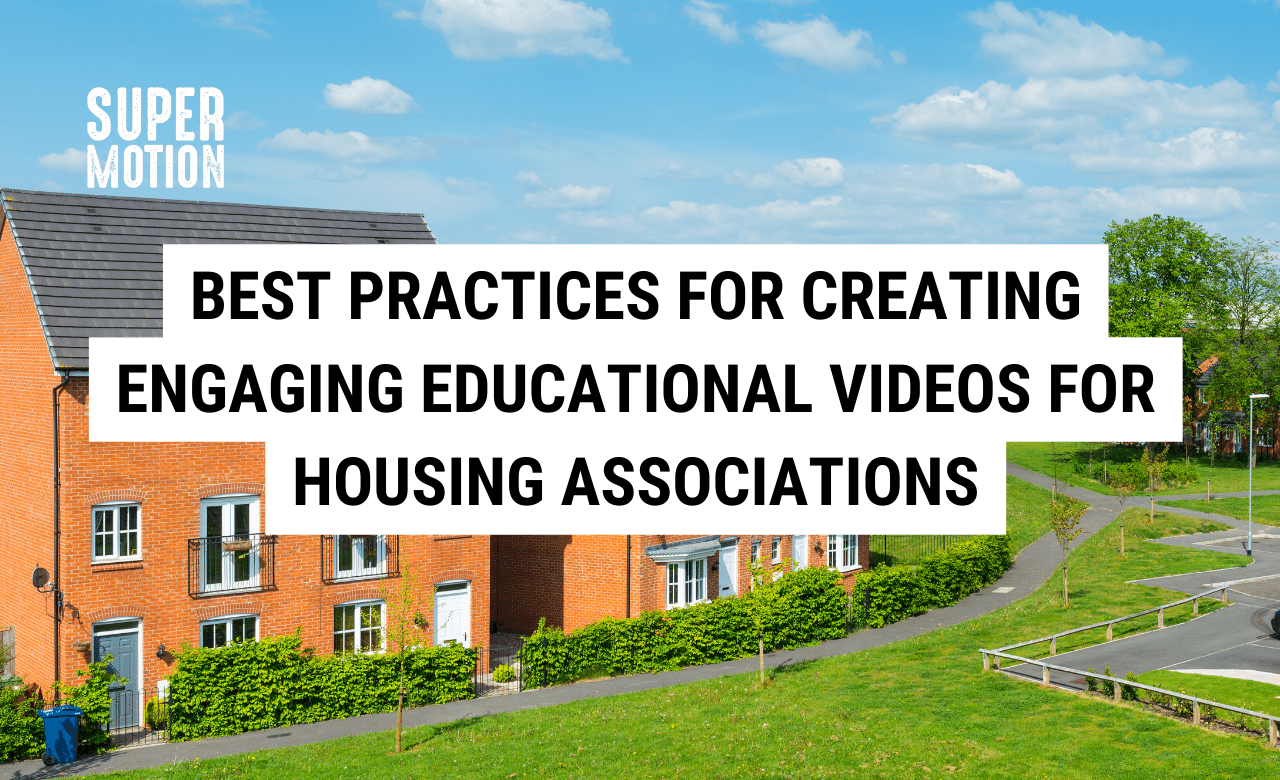Best Practices for Creating Engaging Educational Videos for Housing Associations

In today’s digital age, video content has become a crucial tool for marketing and communications. Housing Associations can benefit greatly from creating engaging educational videos to increase tenant engagement and satisfaction.
However, creating videos that successfully convey educational information while also being engaging can be challenging. In this blog post, we discuss the best practices for creating engaging educational videos, specifically for Housing Associations.
Define Your Objectives
Before creating an educational video, you need to define your objectives and decide what you want your audience to learn from the video.
- What are the main messages you want to convey?
- What key points are most important to communicate?
Understanding your objectives and goals will help guide the rest of the production process from scripting through final editing.
Know your Audience
In addition to being clear on your objectives, it is also crucial to know the target audience. Housing associations have residents from different age groups, backgrounds and cultures. Therefore, understanding their preferences and needs is paramount. Understanding your audience will help you tailor your content and approach accordingly.
For example, if you were creating an educational video for an elderly audience, you might want to create video content that avoids confusing technical language. At the same time, a housing association catering to young adults might want to create a casual-style video that appeals to their interests.

Clear and Concise
In the modern digital landscape with devices, apps and content demanding attention, it’s important to keep your educational videos simple, straightforward and concise.
Avoid using jargon and technical terms that may not be clear to your audience. Try to keep the content in the video short but informative so that your audience can follow along easily.
Long videos that drag on and on will lose viewers’ attention, so it’s best to keep your video between 2-5 minutes long. However, the ideal length of your video will vary depending on the platform, the audience and the complexity of the topic.
Use a Conversational Tone
Using a conversational tone in your video can help keep your audience engaged.
Try to speak in a way that is friendly and personable, rather than being too formal or academic.
Using natural language can also help make the information in your video feel more accessible and relatable, leading to improved engagement with your audience.

Use Visuals and Animations
Adding visuals and animations to your educational videos is a powerful way to engage your audience. Videos that consist solely of talking heads might bore your audience.
On the other hand, video animation, illustrations, and other types of visual content can grab viewers’ attention and help them retain information better.
A great and affordable way to add visuals to your video is to make use of B-roll footage.
B-roll footage is a term used to describe additional footage used to show contextual information alongside the main footage in your video (e.g. an interview).
As an example, Housing Associations may interview Community Engagement Officers to highlight ongoing projects in their local communities, while B-roll footage is used to show the delivery of those projects to create a more engaging video.
B-roll footage is something you can record as part of your filming project, or you can purchase licences for library footage during the editing (post-production) process.

Use Real-life Examples
Using real-life examples is an effective way to make educational videos engaging. For example, an association could use testimonials from residents to provide useful information and make the video content feel relatable.
Using real-life examples also helps to create an emotional connection with viewers, making it easier for them to remember what they’ve learned.
Include a Call-to-Action
Lastly, it is essential to include a call to action in your educational video.
The call to action can be whatever action you desire viewers to take after watching the video — from filling a survey, to attending a community event, or simply subscribing to your social media page.
A call to action provides a clear goal for your viewers and keeps them engaged with an objective.

Conclusion
Creating engaging educational videos for Housing Associations can be a powerful way to communicate with tenants and improve engagement and satisfaction.
By keeping videos simple and accessible, using a conversational tone, and including relevant visuals, you can create videos that your audience will enjoy watching and find informative. Always define your objectives before the production process and tailor the video to meet those objectives.
By following these best practices, Housing Associations can create educational videos that will keep tenants engaged and informed.
